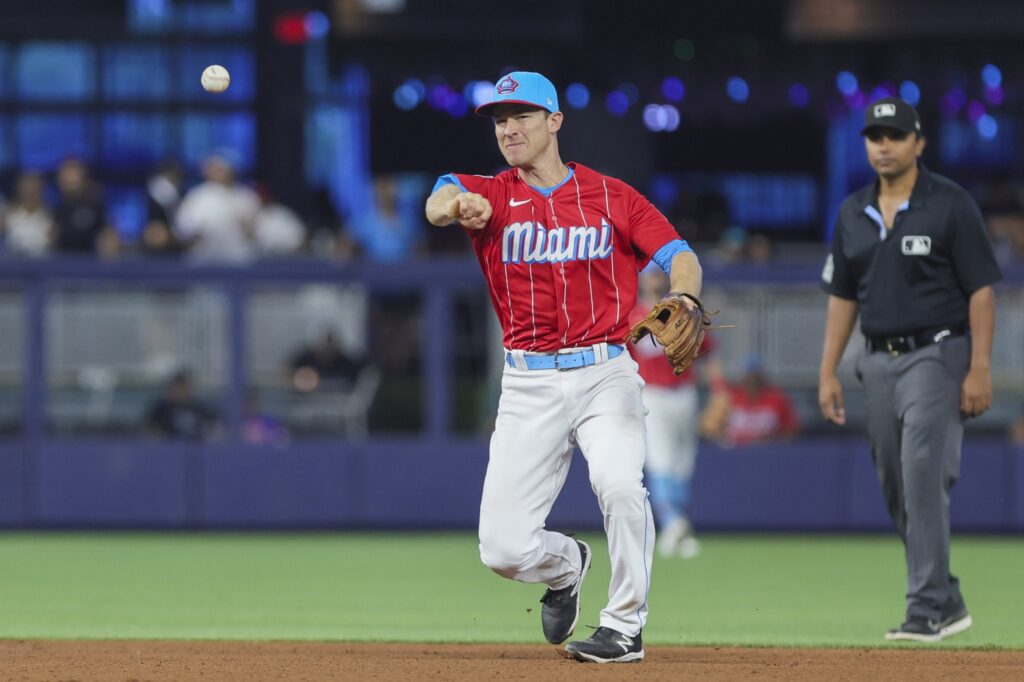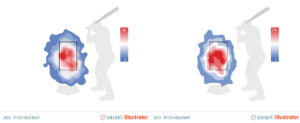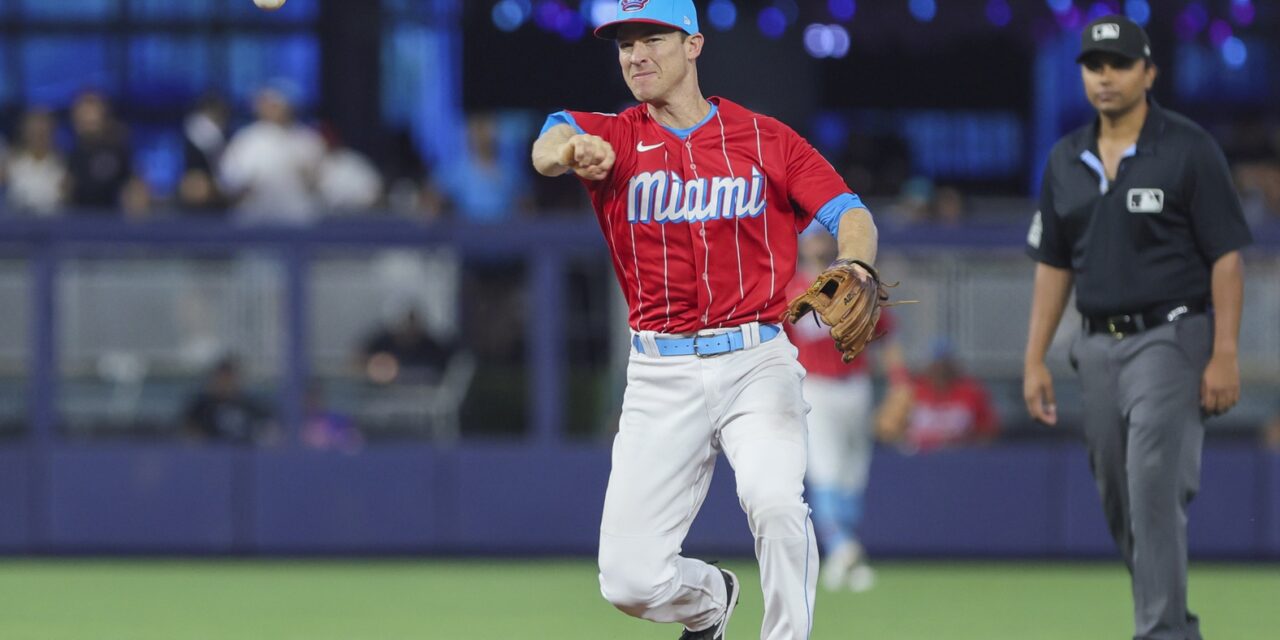Joey Wendle, UT
Position: UT B/T: L/R
Age: 33 (04/26/1990)
2023 Traditional Stats: 112 G, 318 PA, 16 2B, 3 3B, 2 HR, 20 RBI, 7 SB, .212/.248/.306
2023 Advanced Stats: 50 OPS+, 47 wRC+, -0.8 fWAR, 21.1 K%, 4.1 BB%, -3 OAA, 6 DRS

Sam Navarro-USA TODAY Sports
Rundown
On Wednesday night, news broke that the Mets signed Joey Wendle to a one-year, $2 million contract. Wendle has been a mediocre middle infielder throughout his big league career, and at 34, that is unlikely to change. This move should be seen solely as a move to bolster the Mets’ infield depth and bench. Wendle is Luis Guillorme‘s replacement and a more reliable version at that. He has a better offensive track record, has experience all over the infield, and has even played a few games in the outfield.
The first thing that comes to mind with Wendle is his porous offensive results in 2023. Yet, it should be noted that the Marlins asked Wendle to play shortstop daily for the first time in his career at 33. Wendle responded to this challenge by having a somewhat surprisingly strong showing defensively, but offensively, his numbers cratered. Wendle’s BABiP slipped to an unseemly .264, well off his career BABiP of .312 and his K% skyrocketed by 7.6%. Including his inability to hit for power whatsoever, you are left with one of the worst offensive performances in baseball last year.
Contract
As mentioned above, Wendle signed for one year at $2 million. The deal does include performance bonuses that have not been reported yet.
Deeper Look
There is plenty of cause for optimism with Wendle, especially on a low-risk $2M contract. Firstly, his BABiP will almost assuredly rebound to at least league average, which would in itself elevate his offensive profile immensely. Additionally, as a spray ball hitter, getting out of LoanDepot Park should help his HR/FB% somewhat. However, Wendle’s main offensive issues, his propensity to hit groundballs and his inability to walk, are doubtful to change.
What Wendle can change is his swing. Wendle was mechanically sound with the Rays and always kept his elbow tucked into his body. Keeping your elbow tucked into your body through your swing has two severe ramifications. The first is that you can maintain your bat on a level plane for longer, and the second is that you can control the barrel of the bat more consistently.

Wendle could not do this with the Marlins and going back to his swing with the Rays could prove to be a game-changer for him on the Mets. Wendle suffered from being under the ball too frequently and struggled with pitches above the belt. He turned into a low-ball hitter when, in previous seasons, he had been able to handle pitches almost anywhere in the zone. Changing Wendle’s swing mechanics will help improve his consistency and the rate at which he makes contact. It will allow him to hit for more power and will help fuel his return to hitting for average.

Defensively, Wendle brings value with his ability to play multiple positions. Mark Simon of Sports Info Solutions notes that Joey rates very well in Defensive Runs Saved on a per-inning basis at shortstop and second base.
Injuries may be a concern with Wendle. As he ages, he’s experienced a myriad of muscle and deep tissue injuries over the past couple of seasons. Therefore, having more of an ancillary role with the Mets may benefit him immensely.
Grade: B
Joey Wendle will not singlehandedly change the Mets’ fortunes next season. Yet, with a minor adjustment and good old-fashioned regression toward the mean, he can be a league-average player on a reasonable contract. These are the exact kinds of moves David Stearns was notorious for making with the Brewers. Adding players with surplus value is a surefire way of establishing continued success. The more Joey Wendles the Mets can acquire, the higher the floor will be for this team in 2024. And with all the young talent the Mets have stockpiled, we already know what kind of ceiling they have.















